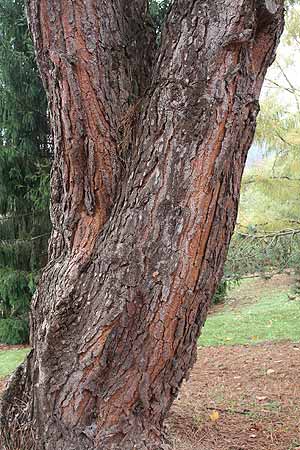
Drought Tolerant Trees are much in favour, not only do Drought Tolerant Trees have a greater survival rate during dry periods, but Drought Tolerant Trees also use much less water and are cost effective as well as hardy.
All trees need some water to survive, however some trees (Drought Tolerant Trees) can get by with a lot less water than others. Drought tolerant trees will help provide shade and protection for less drought tolerant shrubs, plants and ground covers.
Some drought tolerant trees also produce fruit and crops, The Italian Stone Pine (pictured right) has been very successful in parts of California, originally from the Mediterranean it is both drought and salt tolerant.
Trees that use less water have a number of mechanisms that allow them to survive through dry conditions.
Characteristics of Drought Tolerant Trees
Not all trees have the same characteristics however some of the more common ones are :
- Silvery grey foliage which reflects some of the heat of the sun.
- Fine needle like foliage.
- Fine hairs on the leaves that help trap moisture.
- Long tap roots that penetrate deep into the soil.
- The ability to store water in their trunks.
- How to help trees tolerate dry conditions.
You can help to ‘drought – proof’ trees by following a few simple steps.
- Dig some well rotted compost into the soil before planting. The added humus will help with water retention. Do this over as big an area and as deep as is practical.
- Plant trees in late summer to early fall, they will get the chance to grow some roots before summer.
- Water trees in when young with a liquid seaweed fertilizer, this stimulates root growth.
- Plant smaller trees rather than mature ones. Smaller trees are easier to get through the first few summers.
- Mulch around the trees to help maintain a cool root run and increase moisture levels.
- Do not over fertilize. Fertilizer will cause leaf growth, and this requires moisture.
Drought Tolerant Trees are particularly popular in the following states : California, Wyoming, West Virginia, Wisconsin, Washington, Vermont, Virginia, Utah, Texas and Tennessee.
Native Trees are often the best solution to drought.
If we look at local areas we can often find trees that have adapted to dry conditions over many years. In California the fast growing Californian Sycamore, Platanus racemosa is one such tree, one established it survive dry periods.
Some of the oak trees are also suitable, Quercus agrifolia or ‘Coast Live Oak’ is one, evergreen and lots of shade. Quercus lobata and Quercus wislizenii are two others. The White oak Quercus alba is suited to USDA zones 3-9.
So start by looking locally for drought tolerant trees.
One aspect to consider when choosing trees is the soil, although some trees will survive long dry periods in good soil, they do not do so well in sandy open soil.
We list our Best Drought Tolerant Trees
The actual zones will vary depending on local conditions
- Crape or Crepe Myrtle. USDA Hardiness Zones 7 – 10
- Acacias USDA Hardiness Zones
- Pinus Pinea – The Italian Stone Pine or Umbrella Pine. USDA Hardiness Zones 7 – 11
- Chamaecyparis lawsoniana USDA Hardiness Zones 5 – 8
- Cercis siliquastrum – The Judas Tree USDA Hardiness Zones 6 – 9
- Fraxinus pennsylvanica ‘Cimmzam’ USDA Hardiness Zones 6 – 9
- Acer x freemanii USDA Hardiness Zones 3 – 8
- Pyrus or Ornamental Pears USDA Hardiness Zones 5 – 9
- Juniperus USDA Hardiness Zones 2 – 9 depending on species.
- Prunus americana (American Plum) USDA Hardiness Zones
- Melia azedarach USDA Hardiness Zones 8 – 15
- Gleditsia triacanthos USDA Hardiness Zones 3 – 9
- Rhus (various species) USDA Hardiness Zones
- Australian Native trees including Eucalyptus species
- Koelreuteria paniculata USDA Hardiness Zones Zones 5–9.
- Ulmus parvifolia (Chinese Elm) – USDA Hardiness Zones 5-9
- Allocasuarina torulosa – USDA Hardiness Zones 8-11
- Brachychiton acerifolius – USDA Hardiness Zones 9 – 11

